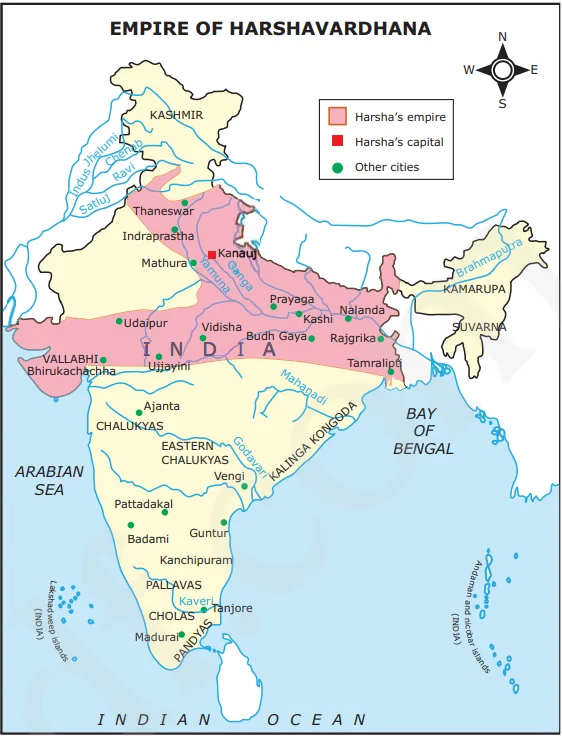![]() May 9, 2024
May 9, 2024
![]() 12002
12002
![]() 0
0
After the fall of the Gupta Empire, North India fragmented into several kingdoms, paving the way for Harshavardhana’s rise. Initially part of the Gupta military, Harsha ascended to power after his father’s murder, uniting Thaneswar and Kanauj under his rule. His reign marked the last significant Hindu rule in Northern India.

| Must Read | |
| Current Affairs | Editorial Analysis |
| Upsc Notes | Upsc Blogs |
| NCERT Notes | Free Main Answer Writing |
Conclusion
Harshavardhana’s rule was characterized by military conquests and diplomatic alliances, expanding his empire across North India. Despite his ambitions to extend southward, he faced resistance from Chalukya king Pulikesin II. While his empire’s extent is debated, Harsha maintained friendly relations with China, leaving a legacy as a prominent ruler in Indian history.
<div class="new-fform">
</div>
Latest Comments